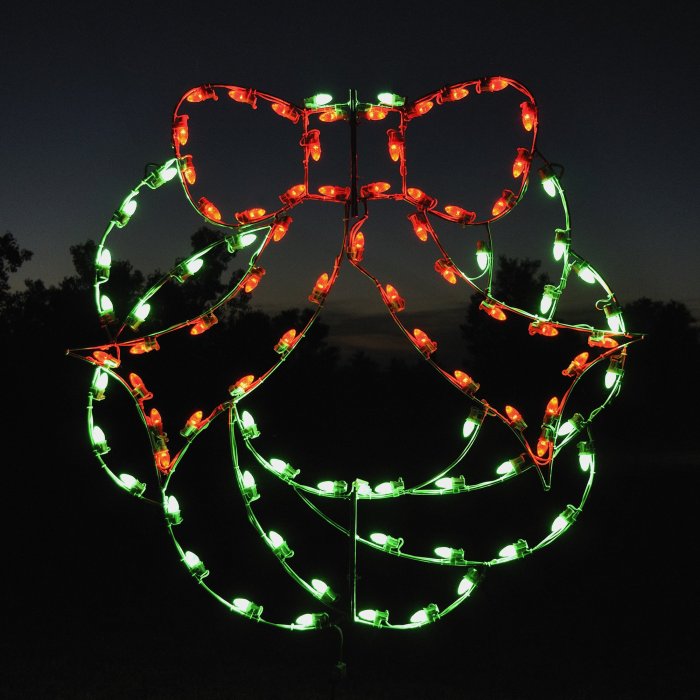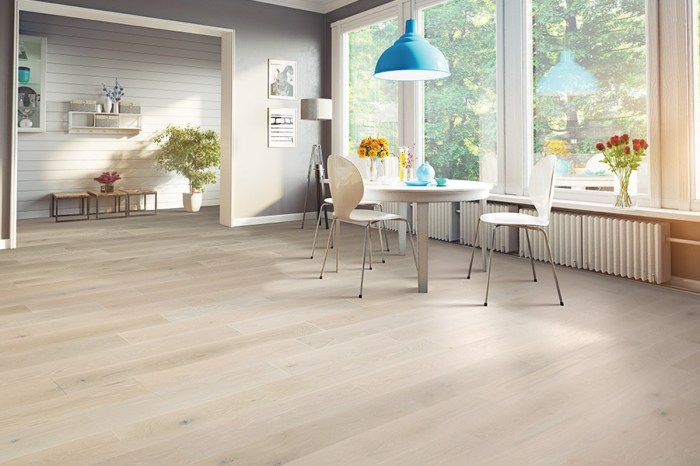Installation and Safety

Outdoor lighted christmas decor – Illuminating our homes for the festive season is a joyous task, but ensuring the safety of our outdoor Christmas lighting is paramount. A well-planned and carefully executed installation prevents accidents and safeguards our property. This section will guide you through the safe installation of various types of outdoor Christmas lights, emphasizing preventative measures to minimize risks.
Safe and effective installation of outdoor Christmas lighting involves careful planning and attention to detail. Prioritizing safety not only protects your family and property but also ensures your holiday decorations remain beautiful and functional throughout the season.
String Light Installation
String lights, a staple of festive décor, require careful handling. Begin by inspecting the entire string for any damaged wires or bulbs before plugging it in.
- Always ensure the lights are rated for outdoor use, indicated by a label specifying weather resistance (typically IP44 or higher).
- Use insulated clips or hooks to secure the lights to your house, trees, or fences, avoiding contact with sharp objects or power lines.
- Avoid overloading a single circuit by spreading the lights across multiple outlets or using appropriate extension cords (discussed further below).
- When connecting multiple strings, ensure the connections are secure and weatherproof, using appropriate connectors designed for outdoor use.
- Never leave lights unattended while plugged in. Turn them off and unplug them before leaving home or going to bed.
Pathway Light Installation
Pathway lights add a magical touch to your outdoor Christmas display, but their installation requires specific attention to safety.
For dazzling outdoor lighted Christmas decor, consider a range of options to illuminate your holiday spirit. Many find inspiration and beautiful pieces at hobby lobby outdoor decor , offering diverse styles and price points. From there, you can easily complete your festive outdoor lighting scheme, creating a warm and inviting atmosphere for the season.
- Before installation, carefully read the manufacturer’s instructions. This will provide crucial information regarding the specific safety measures needed for that particular model.
- Choose locations that are accessible for maintenance and replacement of bulbs, avoiding areas prone to flooding or excessive snow accumulation.
- Use stakes or ground mounts provided by the manufacturer to secure the lights firmly in the ground. Ensure they are stable and unlikely to be dislodged by weather conditions.
- Ensure pathways are adequately lit to prevent tripping hazards. Position lights to provide sufficient illumination without creating glare or blinding effects.
- Consider using low-voltage lights to minimize electrical hazards. Low-voltage systems generally have lower risk of shocks and fires.
Projection Light Installation
Projection lights offer a unique way to create large-scale holiday displays. However, their installation needs careful planning to prevent accidents and damage.
- Position the projector on a stable surface, ensuring it is protected from rain and snow. A covered area or waterproof enclosure is recommended.
- Point the projector away from windows and traffic areas to prevent glare and potential distractions.
- Use a timer or smart plug to automatically turn the lights on and off, preventing accidental damage from prolonged use.
- Make sure the projection surface (house, wall, etc.) is clean and free from obstructions to ensure a clear and bright image.
- Always follow the manufacturer’s instructions for installation and operation, including proper power supply and grounding.
Outdoor Christmas Lighting Safety Checklist
A comprehensive checklist helps ensure the safety of your outdoor lighting display.
- Weatherproofing: Verify that all lights and connectors are rated for outdoor use and properly sealed against moisture.
- Electrical Hazards: Inspect all cords for damage, fraying, or exposed wires. Avoid overloading circuits. Use GFCI-protected outlets (Ground Fault Circuit Interrupters) for outdoor use.
- Secure Mounting: Ensure lights are securely fastened to prevent them from falling and causing damage or injury. Use appropriate clips, stakes, or mounts.
- Fire Safety: Keep lights away from flammable materials like dry leaves, branches, or decorations. Never leave lights unattended while plugged in.
- Access and Maintenance: Choose easily accessible locations for lights to allow for easy bulb replacement or troubleshooting.
Appropriate Extension Cords and Fuses, Outdoor lighted christmas decor
Using the right extension cords and fuses is critical for safe outdoor lighting.
The use of appropriate extension cords and fuses is crucial for preventing electrical hazards. Overloading circuits can lead to overheating, fires, and damage to equipment.
- Extension Cords: Always use heavy-duty, outdoor-rated extension cords designed for the amperage of your lights. Avoid using indoor extension cords outdoors, as they are not designed to withstand the elements.
- Fuses: Ensure your extension cords and power strips are equipped with appropriate fuses to protect against overloads. Replace blown fuses immediately.
- Ground Fault Circuit Interrupters (GFCIs): Use GFCI-protected outlets or GFCI extension cords outdoors to minimize the risk of electric shock. GFCIs detect ground faults and quickly cut off the power to prevent serious injury.
Maintenance and Durability: Outdoor Lighted Christmas Decor

Maintaining your outdoor Christmas lights is crucial for ensuring their longevity and preserving the festive cheer they bring year after year. Proper care and storage can significantly extend their lifespan, saving you money and reducing waste. Let’s delve into the best practices for maximizing the life of your beloved holiday illuminations.Proper maintenance and storage are essential to ensuring your outdoor Christmas lights remain vibrant and functional for many seasons to come.
Neglecting these aspects can lead to premature failure, necessitating costly replacements. By following these simple guidelines, you can significantly prolong the life of your decorations and enjoy their brilliance for years to come.
Best Practices for Maintaining and Storing Outdoor Lighted Christmas Decorations
To ensure your outdoor Christmas lights remain in top condition, regular cleaning and careful storage are vital. These practices not only extend the lifespan of your decorations but also maintain their aesthetic appeal.
- Clean after each use: Gently wipe down the light strings with a soft, damp cloth before storing them. This removes dirt, dust, and debris that can accumulate and cause damage.
- Inspect for damage: Before storing, carefully examine each string for frayed wires, broken bulbs, or any other signs of damage. Repair or replace any damaged components.
- Properly coil and store: Avoid tightly wrapping the light strings, as this can damage the wires. Instead, loosely coil them and store them in a cool, dry place away from direct sunlight and moisture. Consider using a designated storage container or box with dividers to prevent tangling.
- Use protective sleeves: For added protection, consider storing your light strings in protective sleeves or bags. This helps shield them from dust, moisture, and potential damage during storage.
- Label your strings: If you have multiple sets of lights, label them with their length and color to make it easier to locate the specific set you need for the next holiday season.
Durability of Different Materials Used in Outdoor Christmas Lighting
The choice of materials significantly impacts the durability and lifespan of your outdoor Christmas lights. Understanding the strengths and weaknesses of common materials can help you make informed decisions when purchasing new decorations.
| Material | Durability | Advantages | Disadvantages |
|---|---|---|---|
| Plastic | Moderate | Lightweight, inexpensive, widely available in various colors and styles. | Can become brittle and crack over time, especially in extreme temperatures. Susceptible to damage from impacts. |
| Metal | High | Durable, resistant to damage, can withstand harsh weather conditions. | Heavier, more expensive, can rust or corrode if not properly protected. |
| LED | High | Energy-efficient, long lifespan, available in various colors and styles, less heat generation, reducing fire risk. | Can be more expensive upfront than traditional incandescent bulbs. |
Troubleshooting Common Problems with Outdoor Christmas Lights
Encountering problems with your outdoor Christmas lights is not uncommon. Knowing how to identify and resolve these issues can save you time and frustration.
- Flickering lights: Flickering often indicates a loose connection, a faulty bulb, or a problem with the power supply. Check all connections, replace any faulty bulbs, and ensure the power source is functioning correctly.
- Non-functioning bulbs: If only a few bulbs are not working, replace those individual bulbs. If a whole section of the light string is not working, check the connection points between sections and ensure the power source is sufficient.
- Lights not turning on: Check the power source, fuses, and circuit breakers. Make sure the lights are properly plugged in and the connections are secure. If using an extension cord, ensure it is rated for outdoor use and in good condition.
Commonly Asked Questions
How long do outdoor Christmas lights typically last?
It depends on the quality and type of lights. LED lights generally last much longer than incandescent bulbs. Proper storage and maintenance can also significantly extend their lifespan.
Can I use indoor Christmas lights outdoors?
No, indoor Christmas lights are not designed for outdoor use and can pose a significant fire hazard if exposed to moisture or extreme temperatures. Always use lights specifically rated for outdoor use.
What’s the best way to dispose of old Christmas lights?
Check with your local recycling center for options. Many centers accept old Christmas lights for proper disposal and recycling of materials.
How do I prevent my lights from getting tangled?
Carefully wind your lights around sturdy cardboard tubes or use specialized light storage bags designed to prevent tangling after each use.


